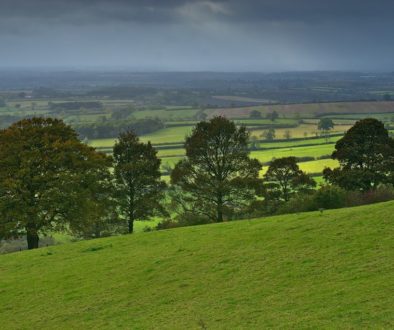Shaking up or short-changing rural?
When most of us hear the word ‘philanthropy’ we think of wealthy individuals supporting worthwhile causes. So what role is (and could) philanthropy play in rural communities? Jessica Sellick investigates.
In the United States – where philanthropy is synonymous with American history, principles and culture – the term is often referred to as ‘the granting of money to non-profit organisations by foundations and corporations’.
But now a more holistic view of philanthropy is emerging – one where it is seen as playing multiple roles as scholar, listener, dream interpreter and community organiser.
Philanthropy has existed as long as society, in its earliest form deriving from the Greek word ‘philanthropia’ meaning ‘love of mankind’. This meaning has evolved over time – from the first organised charity (the King’s School, founded in 579 AD in Canterbury) to the founding of the NSPCC and National Trust in the 1800s, through to prominent philanthropists such as Charles Dickens and Baroness Burdett-Coutts and the creation of the Welfare State.
In a contemporary context, we now have national public fundraising campaigns such as Comic Relief/Sport Relief and BBC Children in Need and a Government that encourages charitable giving through tax incentives. Different types or models of philanthropy have emerged – from individual donors (‘who want to make a difference’) thorough to corporates and business philanthropy (i.e., corporate social responsibility).
In parallel, different aspects of giving are emerging: from the quantitative (generous giving) to the more qualitative (innovative giving) – and financial and social outcomes being sought. So while philanthropy refers to a wide range of activities undertaken by businesses, organisations and individuals – what draws these activities together is acts of kindness directed towards strangers. What do these different philanthropic entities and activities mean for rural communities? I offer three points.
First, to the United States, where the term philanthropy is commonplace but rural communities are often a neglected and forgotten landscape for receiving. In 2004, the National Committee for Responsive Philanthropy (NCRP) published a seminal report ‘Beyond City Limits: the philanthropic needs of rural America‘.
While keeping in mind that ‘rural’ and ‘rural development’ can mean almost anything to funders, the report found of 65,000 active grant making foundations, only 306 were registered as rural grant makers in that they used the term ‘rural’ in their grant descriptions. The giving and asset figures revealed rural states both received less funding and had fewer and smaller foundations compared to their urban counterparts.
Citing states such as North Dakota, Alaska, Montana and West Virginia, the report pointed out a ‘philanthropic divide’ between urban/metropolitan philanthropic wealth and rural/non-metropolitan philanthropic shortfalls: the median rural development grant was found to be just $75,000 despite one-fifth of all Americans living in rural areas.
The report set out a blueprint for making the case for philanthropists to support rural communities: from working collaboratively, to collecting/reporting data to make the case for funnelling money into rural development, and being specific about how grant making can achieve leverage to other kinds of funding thus demonstrating the efficacy of investing in rural communities.
In 2007, the NCRP followed up their original report with ‘Rural Philanthropy: building dialogue from within‘. This research looked at grant making behaviour and trends, finding just 1% of grant dollars and 0.3% of grant making foundations were committed to making grants in rural areas.
The research identified a series of obstacles (real and perceived barriers preventing foundations from engaging more aggressively in rural grant making): from misperceptions of rural people and places through to rural communities being viewed as isolated from the foundation world; and from philanthropy’s reliance on big numbers and scaling up to rural social sector capacity issues and a perception of weak local infrastructure.
Rather than wanting to give to rural communities, Foundations often perceived them to be self-reliant, a pastoral idyll and able to call upon mutual aid. Foundations didn’t necessarily have an accurate picture of rural needs or recognise generationally entrenched poverty.
In 2011, therefore, the Council on Foundations (COF) signed a memorandum of understanding with the US Department of Agriculture (USDA) to inject money and resources into rural communities. Although no accurate philanthropic data is collected or reported, there is a perception among US commentators that rather than an improving rural picture philanthropic investments are continuing to decline.
This has led to calls for a grassroots campaign of rural voices to demand foundations move towards a more just and effective philanthropic strategy which includes rural America.
Second, and back in the UK, the term philanthropy is less commonplace. At a policy and strategic level much funding has been ‘mainstreamed’ which means rather than setting investment in rural communities aside (thus seeing them as a different or special case), policy makers and funders adapt their policies/activities to meet local needs and circumstances – so bodies such as the Lottery, Oxfam GB or Community Foundations may not have specific rural programmes, but they take ‘rural’ into account in their broader decision making process.
Other bodies such as the Prince’s Countryside Fund remain committed to specifically investing in rural communities. In a rural UK context, philanthropy is considered to be about much more than money – and linked to other approaches such as Asset Based Community Development (ABCD) and the Sustainable Livelihoods Approach (SLA).
Discussions that emerge here are around (i) how to make money/investment go further in rural places, (ii) how rural places can do more with or for less, and (iii) to focus on rural assets and potential instead of deficiencies and shortcomings.
While these discussions may be needed, I am left wondering if the conclusion is the same as our American counterparts: that many rural residents are struggling to make ends meet and are we are not looking closely enough at the availability and delivery of philanthropic capital to rural communities. What do we want to accomplish through rural philanthropy and how can we do it?
Thirdly and finally, where next for philanthropy? In June 2016, Julia Unwin (the Chief Executive at the Joseph Rowntree Foundation) gave a lecture about what role philanthropy should play in reducing poverty in the UK.
In highlighting what social evils look like in the 21st century: poverty that saps capability, life chances, isolation and magnifies difference and division, coupled by the impact of austerity and a recognition that too many people are being left behind, Unwin said “we recognise that the answers to poverty are not held in one place.
“It would be as foolish to think that everything can be solved by neighbourhood action, as it would be to look to national governments alone to provide the solution. While we know that it is individuals who get themselves out of poverty, it would be naïve to think that individual behaviour alone accounts for levels of poverty in the UK…
“The prevention and relief of poverty is the first head of charity, and has been since Elizabeth I signed the statute. Should we admit…we have failed “dismally?
Does this demonstrate systemic failure? Does it suggest that the problem is simply too big for philanthropic effort? Should we accept that historic, societal market failure on this sort of scale is just too big for us to address?”
For Unwin, the philanthropy giants of the UK have considerable privilege and advantage as philanthropy “has the power to shine a bright light on what is happening, and ensure that there is no place in the UK where poverty, squalor and disadvantage can be hidden, covered up or ignored…the wealth of philanthropy can send a powerful market signal that we stand on the side of people and places in poverty, and will support initiatives to reduce costs.”
And we can do more.
For me, the overall message from the US and UK is that we can and should do more around meeting the philanthropic needs of rural communities. This is not about special rural pleading but encouraging people in the grant making sector who care about equity and opportunity for all to pay attention to rural communities.
Sadly, poverty is a dimension of rural life, albeit one that is often hidden and poorly addressed. And this also requires us to think about how philanthropy aligns with the state/public policy, the market, communities, families and individuals. If we want a living working countryside we need to think about how philanthropy can make a difference.
Jessica is a researcher/project manager at Rose Regeneration – an economic development business working with communities, Government and business to help them achieve their full potential.
She is currently preparing two Community Led Local Development applications; a Fisheries Local Action Group Strategy; and working with a NHS Trust around the provision of rural health and care. Jessica’s public services work includes research for Defra on alternative service delivery and local level rural proofing.
Jessica can be contacted by email jessica.sellick@roseregeneration.co.uk or telephone 01522 521211. Website: http://www.roseregeneration.co.uk/ Twitter: @RoseRegen


